“For many angels of God accompanied with women, and begat sons that proved unjust, and despisers of all that was good, on account of the confidence they had in their own strength.”
— Flavius Josephus, Jewish Historian (37 AD - 100 AD)
The Wolves Within is a must-read for every believer who refuses to be deceived.
Hit the Tip Jar and help spread the message!
This post contains affiliate links, which means I may receive a commission or affiliate fee for purchases made through these links.
Unlock the mysteries of Biblical cosmology and enrich your faith with some of the top rated Christian reads at BooksOnline.club.
Click the image below and be sure to use promo code SCIPIO for 10% off your order at HeavensHarvest.com: your one stop shop for emergency food, heirloom seeds and survival supplies.
Related Entries
The tale of David and Goliath, the archetypal struggle of the underdog against his seemingly unbeatable foe, has captured the imagination of millennia of believers and skeptics alike.
As time has moved onward, the hermeneutical and interpretive lens through which the Bible is viewed have changed rather radically, and these verses have taken on different meanings to many different theologians during that time period. For the better part of the last two millennia, particularly since the widespread acceptance of Augustinian philosophy, the more “fantastical” verses of Genesis and creation have been interpreted almost exclusively in an allegorical light. The radical departure from the first two millennia of Hebrew and early Christian understanding — a departure largely influenced by Platonic and Greek teachings — has stripped much of the majesty and wonder of God’s creation away from His Word. This approach flies in the face of the literal meaning that its writers understood it as. The Book of Genesis is not a simple poem or allegorical fable, and nor did Moses, the Hebrews, the Apostles, or the early Church fathers read it as anything other than the true, literal history of creation.
In recent decades, several notable theologians — such as Dr. Michael Heiser — have begun to reintroduce some of these supernatural concepts back into the collective Christian consciousness. This essay will only focus on one part of that work: the giant clans mentioned throughout the Old Testament who were born of the union betwixt human females and the beney'ha-Elohim, or the sons of God. These sons of God, seen rejoicing during the creation of the Earth in Job 38:7, are quite clearly not men as Augustine and other post-Reformation thinkers have suggested for the last 1500 years (see BC I: What is a Star? for a further exploration of this topic of the elohim). Their reasons for such are myriad and somewhat outside the scope of this essay, but it is important to address nonetheless.
The Biblical texts cited below clearly paint a picture of men who were not just great warriors, but of a stature, size, and physicality that is clearly not that of a mere human. The story of the conquering of the Holy Land is severely impacted by removing this integral context from the narrative. It was as much about demonstrating God’s power against the pagan civilizations inhabiting the promised land as it was about the destruction of the remnant of the nephilim.
“1 Hear, O Israel: Thou art to pass over Jordan this day, to go in to possess nations greater and mightier than thyself, cities great and fenced up to heaven,
2 A people great and tall, the children of the Anakims, whom thou knowest, and of whom thou hast heard say, Who can stand before the children of Anak!”
— Deuteronomy 9:1-2
The Hebrew word nephilim is often translated as giant within the KJV and denotes a general class or race of people that once inhabited the Holy Land.
That description, while accurate, lacks the proper context that studying the source language provides. Even the Hebrew word used to describe these giants alludes to the fallen nature of their origin. The Hebrew suffix -im used here denotes a plurality, while the root word of nephilim is naphal, or to fall. Nephilim is therefore better understood as of the Fallen, or the Fallen, although the term giant still accurately describes them. Giant clans are mentioned throughout the Old Testament, not just in Genesis or Samuel. The major giant clans named include: the Rephaim, the Zuzim, the Emim, the Anakim, and the Amorites.
With that important context established, let us work our way chronologically through Holy Scripture and see what God’s word has to say on the subject of giants (emphasis mine):
“6 And it came to pass, when men began to multiply on the face of the earth, and daughters were born unto them,
2 That the sons of God saw the daughters of men that they were fair; and they took them wives of all which they chose.
3 And the Lord said, My spirit shall not always strive with man, for that he also is flesh: yet his days shall be an hundred and twenty years.
4 There were giants in the earth in those days; and also after that, when the sons of God came in unto the daughters of men, and they bare children to them, the same became mighty men which were of old, men of renown.
5 And God saw that the wickedness of man was great in the earth, and that every imagination of the thoughts of his heart was only evil continually.
6 And it repented the Lord that he had made man on the earth, and it grieved him at his heart.”
- The Book of Genesis 6:1-6 KJV
The sons of God, as Job 38:7 makes clear, are angels. These fallen angels mated with humans and created the giants, a grievous sin against both creation and Creator. Note verse 4: “There were giants in those days [before the Flood], and also after that [after the Flood].” It is important to distinguish that giants are said to inhabit both pre and postdiluvian Earth; and considering Moses had engaged in battles against them, he would have been well aware of that fact. (Deuteronomy 3)
— Possible routes of the Hebrew tribes under the leadership of Moses.
Giants appear rather shortly post-Flood, just a few chapters after they are first introduced. Genesis Chapter 14 is one of those chapters that has a ton going on, so it’s no surprise that the giant clans mentioned here are quite often overlooked since they are only revealed as giants in latter books. The chapter begins with The War of the Kings, an alliance of humans that join together to wipe out rebellious clans that had recently shed their chains of vassalage:
5 And in the fourteenth year came Chedorlaomer, and the kings that were with him, and smote the Rephaims in Ashteroth Karnaim, and the Zuzims in Ham, and the Emins [Emims] in Shaveh Kiriathaim,
6 And the Horites in their mount Seir, unto Elparan, which is by the wilderness.
7 And they returned, and came to Enmishpat, which is Kadesh, and smote all the country of the Amalekites, and also the Amorites, that dwelt in Hazezontamar.
— The Book of Genesis 14:5-7 KJV
We will discuss the striking similarities between the Genesis narrative and other cultures’ tales of six fingered giants in Part II, for now simply note the several tribes mentioned here. Deuteronomy 2:11 describes the height of the Emim tribe, like that of the Anakim, another tribe we will discuss soon. Also mentioned in chapter 14 are three warriors of the Amorite tribe: Aner, Eshcol, and Mamre. These three warriors had entered into a pact of some sort with Abraham and helped him rescue Lot — likely after the destruction of the Amorite village mentioned earlier in chapter 14. Amos 2:9 describes the Amorite people with “height… like the height of the cedars” and “strong as the oaks”. This description matches those of other giant clans given throughout Holy Scripture.
Once Joseph and his family take up residence within Egypt, giants take a back seat narrative wise for the next couple of books. The next time we see the nephilim is in Numbers 13, when the Hebrew scouts return with tales of their reconnoiter of Canaan (emphasis mine):
25 And they returned from searching of the land after forty days.
26 And they went and came to Moses, and to Aaron, and to all the congregation of the children of Israel, unto the wilderness of Paran, to Kadesh; and brought back word unto them, and unto all the congregation, and shewed them the fruit of the land.
27 And they told him, and said, We came unto the land whither thou sentest us, and surely it floweth with milk and honey; and this is the fruit of it.
28 Nevertheless the people be strong that dwell in the land, and the cities are walled, and very great: and moreover we saw the children of Anak there.
29 The Amalekites dwell in the land of the south: and the Hittites, and the Jebusites, and the Amorites, dwell in the mountains: and the Canaanites dwell by the sea, and by the coast of Jordan.
30 And Caleb stilled the people before Moses, and said, Let us go up at once, and possess it; for we are well able to overcome it.
31 But the men that went up with him said, We be not able to go up against the people; for they are stronger than we.
32 And they brought up an evil report of the land which they had searched unto the children of Israel, saying, The land, through which we have gone to search it, is a land that eateth up the inhabitants thereof; and all the people that we saw in it are men of a great stature.
33 And there we saw the giants, the sons of Anak, which come of the giants: and we were in our own sight as grasshoppers, and so we were in their sight.
- The Book of Numbers 13:25-33 KJV
Importantly the word used here in verse 33 for giant is nephilim, as the surrounding text makes clear by their physical descriptions. These Anakim, quite literally the sons of Anaq/Anak, are clearly described as descendants of the nephilim. This and other verses (Goliath and his brothers for instance) seem to imply some ability for giants to reproduce.
The Amorites first seen in Genesis 14 show up repeatedly in the conquest of the Holy Land. The five nephilim Amorite kings were famously defeated during the longest day seen in Joshua 10:12-14, and their army was destroyed through a miraculous hail of stones. These miracles take on an entirely new light when we realize they were direct manifestations of God’s power in order to assist the Hebrews in the physical destruction of the seed of the nephilim.
— Joshua’s Conquest of Canaan.
The other giant tribe mentioned with some regularity is the Rephaim:
18 Thou art to pass over through Ar, the coast of Moab, this day:
19 And when thou comest nigh over against the children of Ammon, distress them not, nor meddle with them: for I will not give thee of the land of the children of Ammon any possession; because I have given it unto the children of Lot for a possession.
20 (That also was accounted a land of giants [rephaim]: giants [rephaim] dwelt therein in old time; and the Ammonites call them Zamzummims;
21 A people great, and many, and tall, as the Anakims; but the Lord destroyed them before them; and they succeeded them, and dwelt in their stead:
22 As he did to the children of Esau, which dwelt in Seir, when he destroyed the Horims from before them; and they succeeded them, and dwelt in their stead even unto this day:
- Deuteronomy 2:18-22 KJV
The word used for giants in Verse 20 is rephaim (rapha), another tribe that once inhabited the valley southwest of Jebus (now Jerusalem). The Ammonite name for this tribe was the Zamzummim, and it is unclear whether this was a distinct group from the Zuzim mentioned in Genesis 14 or simply an offshoot of the Rephaim. The Horims, while only mentioned this once, also seem to be giants as they are likened to the Anakim.
Their former home was the aptly named Valley of the Rephaim, as mentioned in Joshua 15:8. The valley interestingly borders the Valley of Ben Hinnom, or Gehenna. This unholy place, where the Israelites sacrificed their children to Moloch, would become Jerusalem’s trash dump after King Josiah desecrated it and outlawed child sacrifices (2nd Kings 23). Gehenna appears several times in the New Testament, translated as Hell, with the Pharisees being called sons of Gehenna in Matthew 23:15. I find it particularly interesting that nephilim took up residence near what ancient Hebrews would have considered the gates of Hell.

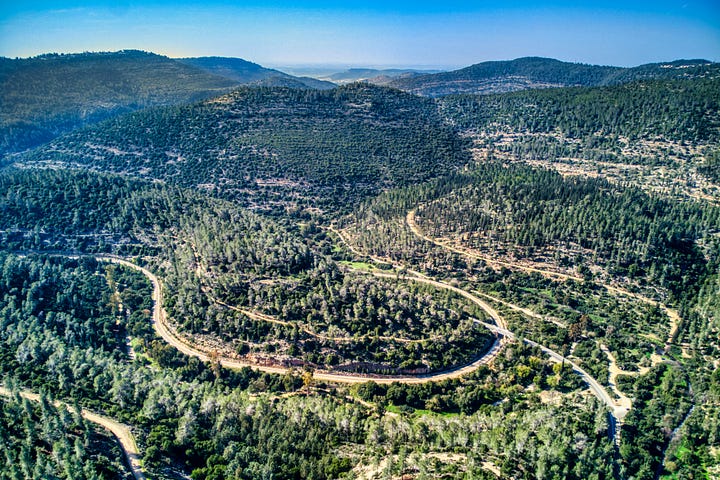
— The Valley of the Rephaim, southwest of Jerusalem.
One of the most blatant proofs of the extraordinary size of the giants is the dimensions given for Og, King of Bashan’s bed:
11 For only Og king of Bashan remained of the remnant of giants; behold his bedstead was a bedstead of iron; is it not in Rabbath of the children of Ammon? nine cubits [13’6”] was the length thereof, and four cubits [6’] the breadth of it, after the cubit of a man. [~18”]
12 And this land, which we possessed at that time, from Aroer, which is by the river Arnon, and half mount Gilead, and the cities thereof, gave I unto the Reubenites and to the Gadites.
13 And the rest of Gilead, and all Bashan, being the kingdom of Og, gave I unto the half tribe of Manasseh; all the region of Argob, with all Bashan, which was called the land of giants.
- Deuteronomy 3:11-13 KJV
These weren’t just big guys or powerful warriors as some storied theologians have argued. Og’s bed, which verse 11 says was kept as a trophy because of its enormity, was almost 14 feet long and 6 feet wide, making him somewhere around 11’6” to 12’ tall. Note too that the word used for giant in verse 11 is rephaim, making Og the last of the Rephaim. Both Joshua 12:4 and Joshua 13:12 further confirm that Og was the last of this tribe of giants who had once dwelt in Ashtaroth Kernaim.
“Therefore He utters no fable whatever respecting the giants; but He wishes to set this fact before your eyes, that some men are born of the earth, and some are born of heaven, and some are born of God.”
— Philo Judaeus, Jewish Philosopher (20 BC - 50 AD)
The next time we see the giants is during the story of King David, when Goliath the Philistine makes his appearance:
4 And there went out a champion out of the camp of the Philistines, named Goliath, of Gath, whose height was six cubits and a span.
5 And he had an helmet of brass upon his head, and he was armed with a coat of mail; and the weight of the coat was five thousand shekels of brass.
6 And he had greaves of brass upon his legs, and a target of brass between his shoulders.
7 And the staff of his spear was like a weaver's beam; and his spear's head weighed six hundred shekels of iron: and one bearing a shield went before him.
8 And he stood and cried unto the armies of Israel, and said unto them, Why are ye come out to set your battle in array? am not I a Philistine, and ye servants to Saul? choose you a man for you, and let him come down to me.
9 If he be able to fight with me, and to kill me, then will we be your servants: but if I prevail against him, and kill him, then shall ye be our servants, and serve us.
10 And the Philistine said, I defy the armies of Israel this day; give me a man, that we may fight together.
11 When Saul and all Israel heard those words of the Philistine, they were dismayed, and greatly afraid.
- 1st Samuel 17:4-11 KJV
Goliath’s height here is given as 9’6”, and his armor is equally impressive in its dimensions. His chain mail was ~150 lbs., his spear was ~33 lbs., and with greaves, a helmet and a massive sword in addition, his full battle kit was likely in excess of 300 lbs. That is an incredible weight to walk around in for a normal human, let alone fighting effectively in it (for reference a full set of plate armor typically weighed 35-55 lbs., with a total kit around 45-70 lbs.) That an entire army was cowed into submission before him is a testament to the sheer physical prowess of such a warrior. The strongest man in the world, Hafþór Júlíus Björnsson, deadlifted 1,105 lbs, but even he would have a difficult time effectively fighting with such a weight; that is also after a lifetime of admitted steroid usage, Olympic level training, and modern nutrition. It is clear by Goliath’s physical dimensions and the specifications of his equipment that we are not just talking about a tall guy or someone comparable to a modern athlete.
(The famous battle between David and Goliath is completed in 1st Samuel Chapter 17.)
— David Slays Goliath, 1866, ill. by Gustave Doré.
David’s first action after his coronation in Jerusalem was taking the fight to the Philistines. He destroyed two Philistine armies in battle, the second in the Valley of the Rephaim (2nd Samuel 5:18). His armies eventually chase down and slay the rest of Goliath’s brothers, as detailed in 2nd Samuel:
16 And Ishbibenob, which was of the sons of the giant, the weight of whose spear weighed three hundred shekels of brass in weight, he being girded with a new sword, thought to have slain David.
17 But Abishai the son of Zeruiah succoured him, and smote the Philistine, and killed him. Then the men of David sware unto him, saying, Thou shalt go no more out with us to battle, that thou quench not the light of Israel.
18 And it came to pass after this, that there was again a battle with the Philistines at Gob: then Sibbechai the Hushathite slew Saph, which was of the sons of the giant.
19 And there was again a battle in Gob with the Philistines, where Elhanan the son of Jaareoregim, a Bethlehemite, slew the brother of Goliath the Gittite, the staff of whose spear was like a weaver's beam.
20 And there was yet a battle in Gath, where was a man of great stature, that had on every hand six fingers, and on every foot six toes, four and twenty in number; and he also was born to the giant.
21 And when he defied Israel, Jonathan the son of Shimeah the brother of David slew him.
22 These four were born to the giant in Gath, and fell by the hand of David, and by the hand of his servants.
- 2nd Samuel 21:16-22 KJV
The word used for giant in these verses is a form of rapha, a word we know refers to the valley where these giants once called home. Also take note of the description of the giant in Gath: six toes and six fingers (this unique identifying feature will be seen quite prominently in Part II). David and his army’s battles against the last of the giants is also detailed in 1st Chronicles 20:4-8, and with that we see the final remnants of the nephilim within the Holy Land wiped out.
— Source: How big was Goliath’s Spear? According to weapons experts, 12’ 7 “ and over 33 lbs.
Before finishing this essay I of course want to mention the extra-Biblical texts that affirm this view as well, such as the First Book of Enoch and the Book of Jubilees. I wanted to first make the case purely using the Word of God, as that is the ultimate and the only metric by which we can interpret His Word. While relying on extra-Biblical sources should never be the primary tool to rest one’s beliefs on, Enoch I fleshes out much of what we have discussed above, detailing how the fallen angels taught mankind evils such as sorcery, astrology and chemically induced abortions. This text was known to Jesus and His apostles, with near direct quotations from the book appearing several times in the New Testament (such as Jude). While Enoch I or Jubilees are clearly not on par with the 66 books of the Holy Bible, the Deuterocanon and certain apocryphal books are nonetheless important texts for discerning Christians to study.
As I have detailed above, a close inspection of the verses and chapters that mention the nephilim within scripture clearly paint a picture of supernaturally gifted beings. The Fallen Angel view of Genesis 6 was widely held by both the Hebrews and the early church fathers. Both the Apostle Jude and Peter affirm this understanding of God’s Word (Fallen, Chaffey, Pg. 140). The historical record is quite clear on this matter: the Fallen Angel view was the widely held and only interpretation of these verses mentioning giants for nearly two millennia. It was Greek philosophers — the intellectual descendants of Mystery Babylon — that introduced the allegorical and metaphorical interpretive models to Christian theologians in the early Third and Fourth centuries.
It is not a coincidence in my mind that the Fallen Angel view only begins to be ridiculed and maligned after the infusion of Plato’s Mystery school teachings into Christian Biblical interpretation.
Continued in Part II…
— The Fall of the Rebel Angels, 1562, ill. by Pieter Bruegel the Elder.
“But from their unhallowed intercourse spurious men sprang, much greater in stature than ordinary men, whom they afterwards called giants; not those dragon-footed giants who waged war against God, as those blasphemous myths of the Greeks do sing, but wild in manners, and greater than men in size, inasmuch as they were sprung of angels; yet less than angels, as they were born of women.”
— Clement of Rome, Third Bishop of Rome (1st Century)
Further Research
The Holy Bible (1611 KJV w/ Apocrypha)
The Unseen Realm: recovering the supernatural worldview of the Bible by Dr. Michael S. Heiser
Fallen: The Sons of God and the Nephilim by Dr. Tim Chaffey
The Book of Enoch: Translated from the Ethiopic, w/ Introduction and Notes by Rev. George H. Schodde, Ph.D.
The Wolves Within is a must-read for every believer who refuses to be deceived.
Hit the Tip Jar and help spread the message!
This post contains affiliate links, which means I may receive a commission or affiliate fee for purchases made through these links.
Unlock the mysteries of Biblical cosmology and enrich your faith with some of the top rated Christian reads at BooksOnline.club.
Click the image below and be sure to use promo code SCIPIO for 10% off your order at HeavensHarvest.com: your one stop shop for emergency food, heirloom seeds and survival supplies.







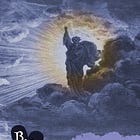
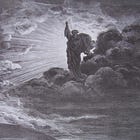
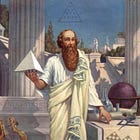


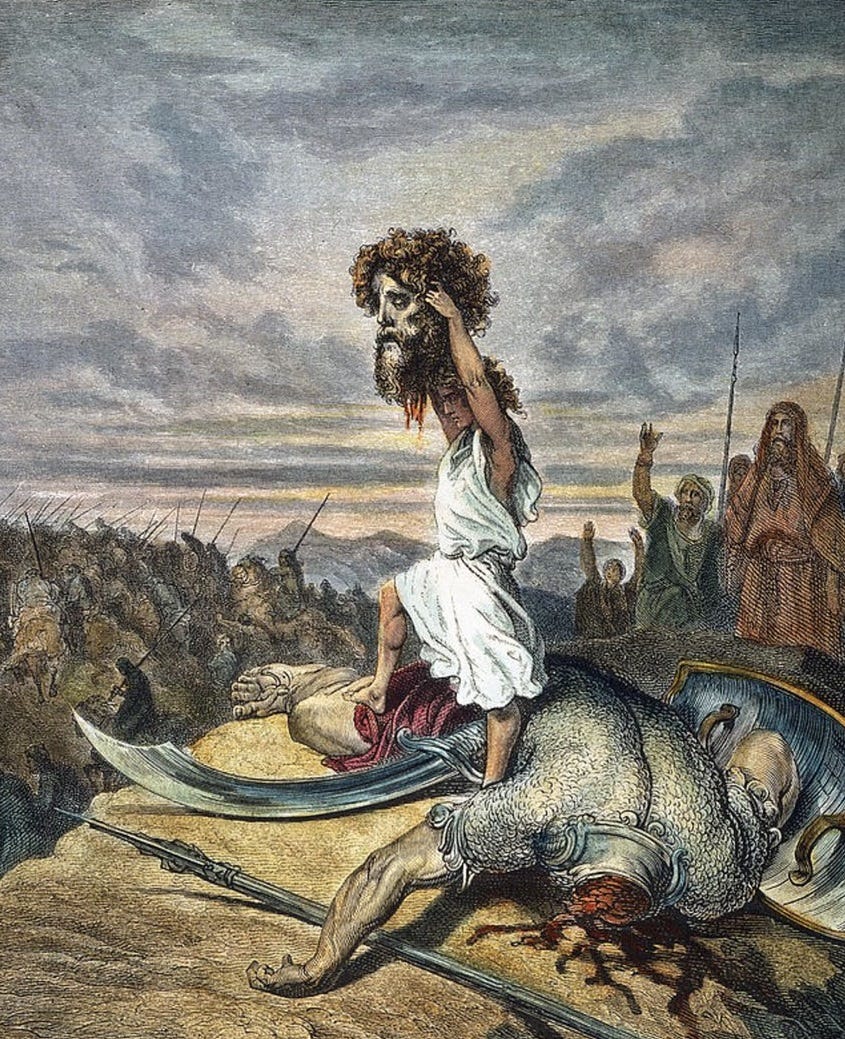


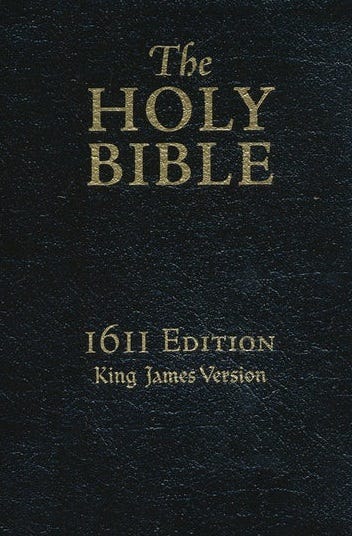

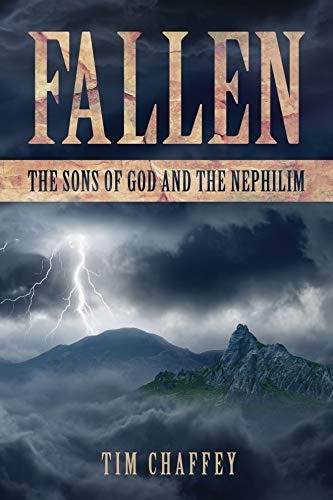

You will also find this interesting
https://canadafreepress.com/article/fossil-fuel-is-nuclear-waste
You may enjoy this: on you tube find a Ted talk by Malcolm Gladwell on the unheard story of David and Goliath. He looks into the makeup of the stone, the sling, and all of it in the hands of a skilled slinger.
I like to shoot for fun and know basic ballistics. Essentially, the big dude got hit right between the eyes with a 45 caliber round at 900 feet per second.
Take that.